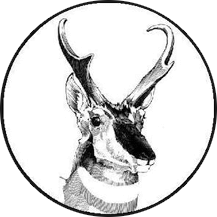What are Mammals?
Scientists classify organisms in a hierarchical scheme. With the broadest category at the top and most specific at the bottom, the scheme looks like this:
Kingdom
Phylum
Class
Order
Family
Genus
species
There are multiple Classes within a single Phylum, multiple Orders in a single Class, etc. Each of these categories is called a taxon. The taxon to which mammals belong is the Class Mammalia, which is in the Phylum Chordata in the Kingdom Animalia. Placing mammals in one Class indicates that they are more closely related to one another than any mammal is to an animal in a different Class.
Mammals have many physical characteristics that make them distinct from other animals. These include:
- Hair
- Production of milk
- Many aspects of the skeleton, especially the skull.
If you are interested in exploring the names and references to the classification of all the mammals in the world,
- Follow this link to the Bucknell University and Mammal Species of the World edited by Wilson and Reeder that was published in 2005.
- The Biodiversity Committee compiles and maintains the Mammal Diversity Database (MDD), an updatable and online database of mammal taxonomic and biodiversity information hosted by ASM at http://mammaldiversity.org/.
Additionally, the Public Education committee of the ASM has developed state-by-state species lists.
We've also assembled a list of other Internet resources related to mammals and mammalogy -- take a look!
If you're interested in joining ASM, see our Membership page for details.
ASM is also very proud of it's Mammal Image Library. It's an exhaustive collection of pictures of mammals which we make available to the public at very reasonable prices. Have a look!
